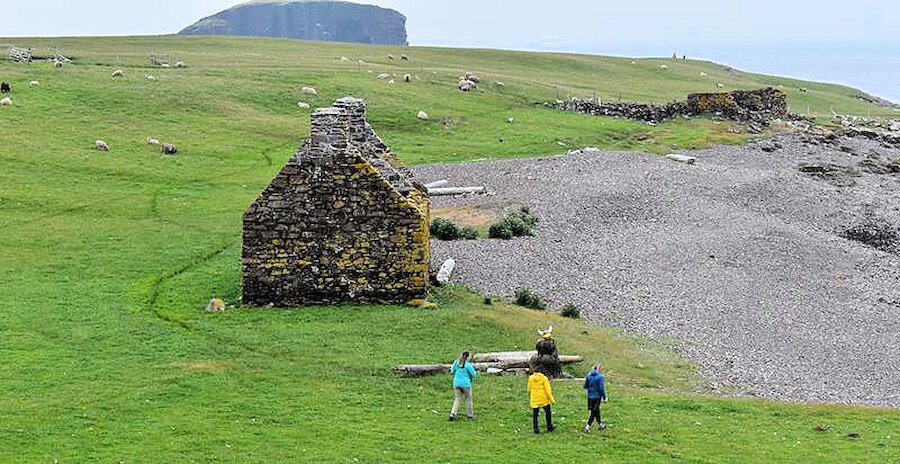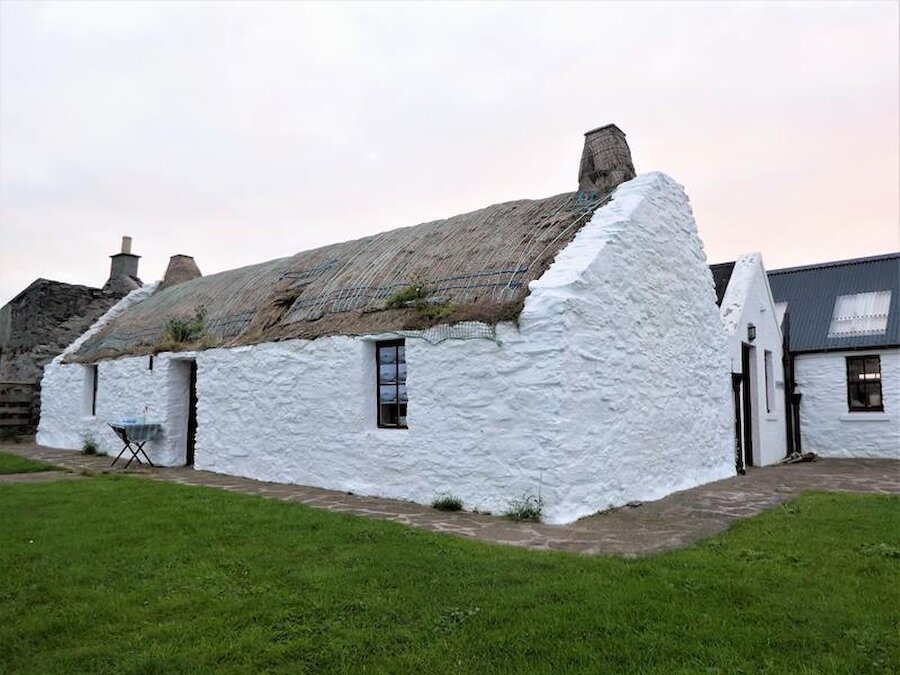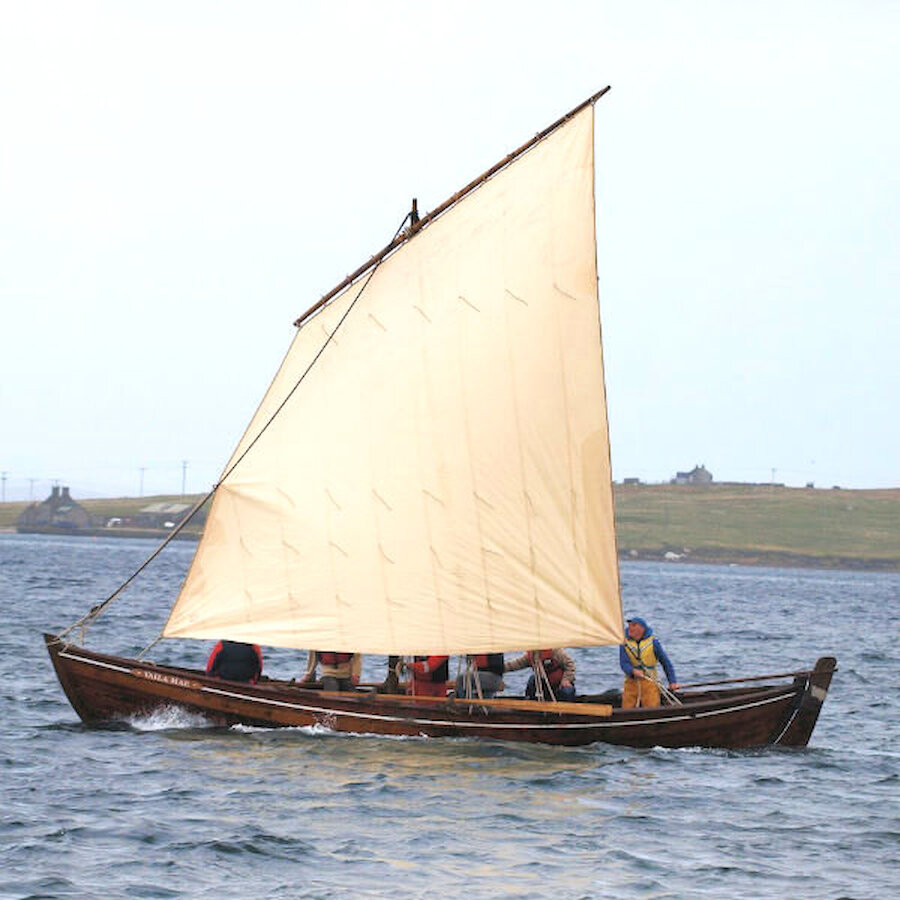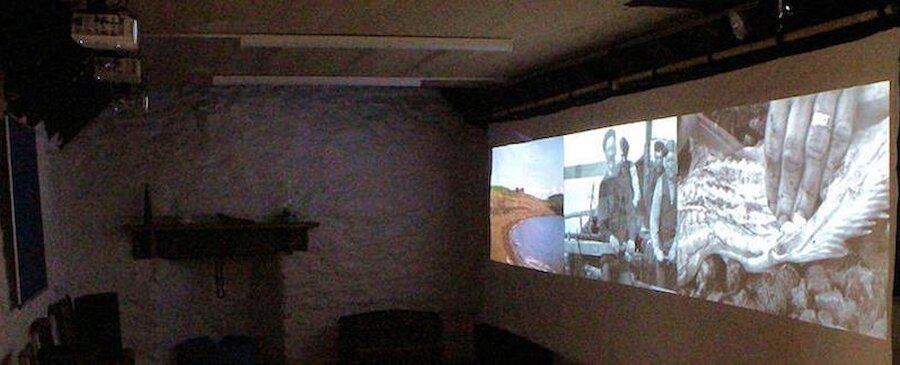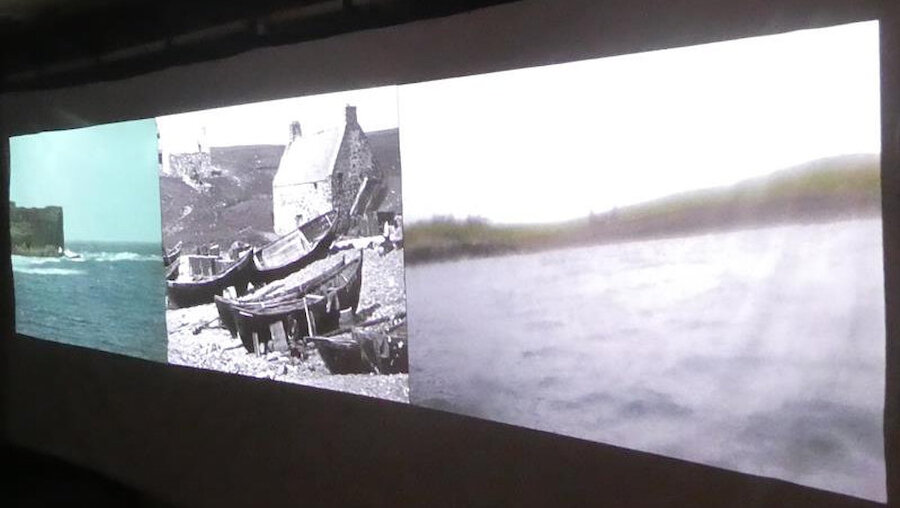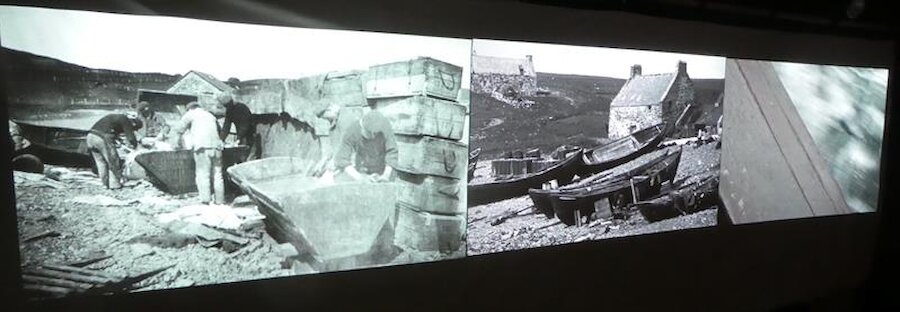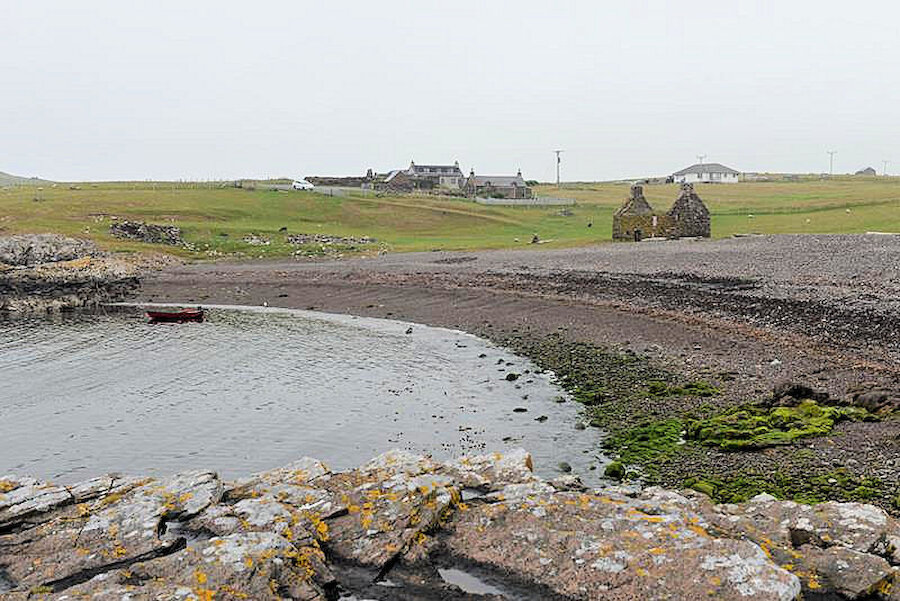The long-abandoned fishing station at Stenness in the north-eastern district of Northmavine has been the focus of work by Janette Kerr and Jo Millett. The most recent element in their project is a ‘sound walk’, which employs cutting-edge GPS technology to offer a fascinating, immersive insight into the hard lives of the fishermen who were based there.
Janette is a painter who works in landscapes and seascapes, and especially in their historical context. Jo uses moving images and sound to explore similar themes and their links with memory and location.
The sound walk builds on their earlier exploration of the Stenness story. Back in 2017, they exhibited a video and sound installation, Confusing Shadow with Substance, at the Shetland Museum and Archives. It’s being made available again at venues in Shetland and elsewhere. The tour began in early September 2021 as part of Shetland’s film festival, ScreenPlay, at Easthouse, a picturesque thatched cottage – now the home of a local history group – in West Burra.

